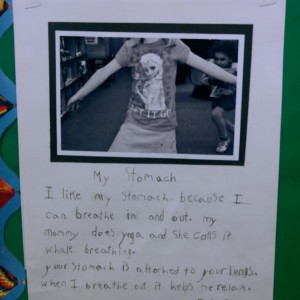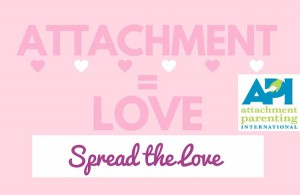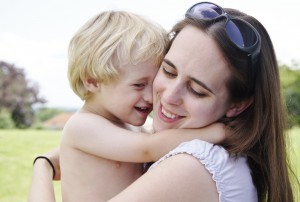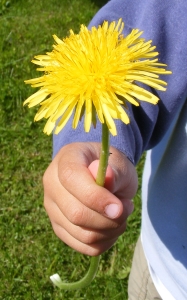 Our young children — still — master the natural, simple and intuitive connection between body, mind and emotion. Let’s support and inspire each other to live with more ease and calm, every single day. And in case you forgot how to do this, let your kids be your teacher.
Our young children — still — master the natural, simple and intuitive connection between body, mind and emotion. Let’s support and inspire each other to live with more ease and calm, every single day. And in case you forgot how to do this, let your kids be your teacher.
Last school year, my daughter and her Grade 1 classmates worked on a classroom project called “My Favorite Part of the Body.” Students were asked to identify one part of their body that they particularly liked. The teacher snapped a picture of whatever body part the kids chose, and each child came up with a text outlining why this body part was their favorite.
When the parents were invited to visit the classroom to have a look at their children’s works of art, my daughter enthusiastically pulled me toward the picture she had created. When I saw it and read what she had to say, my heart melted! This is what my then 6-year-old girl came up with:
Looking at her artwork, there were several things that immediately struck me:
- The adorable innocence and the natural, simple unconditional body love radiating through the picture and text;
- The natural and simply basal connection my little one formed between her lungs and belly, the act of deep breathing, and the positive feeling of relaxation and calm which it can bring about;
- How much our children value seeing us parents live and model easy, positive, simple and natural connections between body, mind and emotion.
Reflecting on this — and on the fact that we grown-ups ever so often seem to find ourselves in a state of moderate to total body-mind-emotion disconnection, often accompanied by a rather negative body image and self-awareness — my mom heart started wondering:
- When, why and where did we lose this connection?
- And how can we gently support our growing children and adolescents in maintaining and nourishing this natural, simple, intuitive connection to their bodies, minds and emotions?
Maybe the answer lies here: Let’s practice, grow and flow together, inspiring each other every day by practicing the simple art of mindfully and intuitively tuning into our bodies, minds and emotions.
In case you forgot how to do this or need some extra inspiration, just take a look at your kids and let them be your teacher! Observe them in their natural, innocent way of embodying a positive mind-body-emotion connection.
How simple is that!
We are all blessed with a wonderful body that includes a stomach. Besides our stomach, our torso also includes our lungs — and the whole thing is somehow connected. And, hey, with the help of our lungs (and diaphragm) and belly, we can breathe in and out — not only this, we can breathe deeply into our bellies.
When we perform this simple act of deep belly breathing for a couple of moments, it might actually affect the way we feel in a positive way: We might feel more calm and relaxed or maybe just plain good, happy, soothed, at ease, de-stressed, ___________ (fill in the blank).
Our body and mind can do amazing things for us, easily — no elaborate studies, gurus or equipment needed! We simply have to remember and trust these naturally given abilities — to feel into our bodies, and then practice what feels natural, good and intuitive, like deep belly breathing in a moment where we feel tense, sad or anxious. (These are moments when we naturally gravitate toward more agitated, fast and shallow “chest breathing.” Observe yourself and your breathing patterns in these moments.)
Start right here where you are, one deep belly breath at a time — your body, your mind, your emotional state and your kids will thank you!









